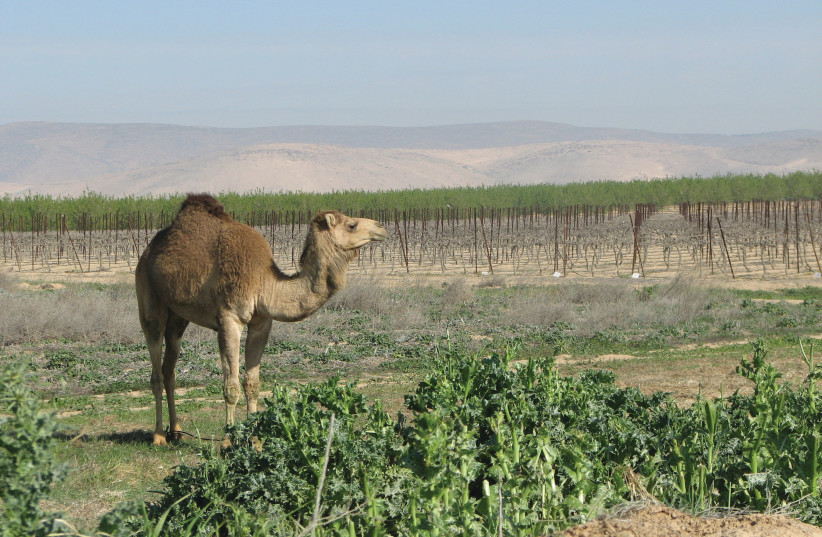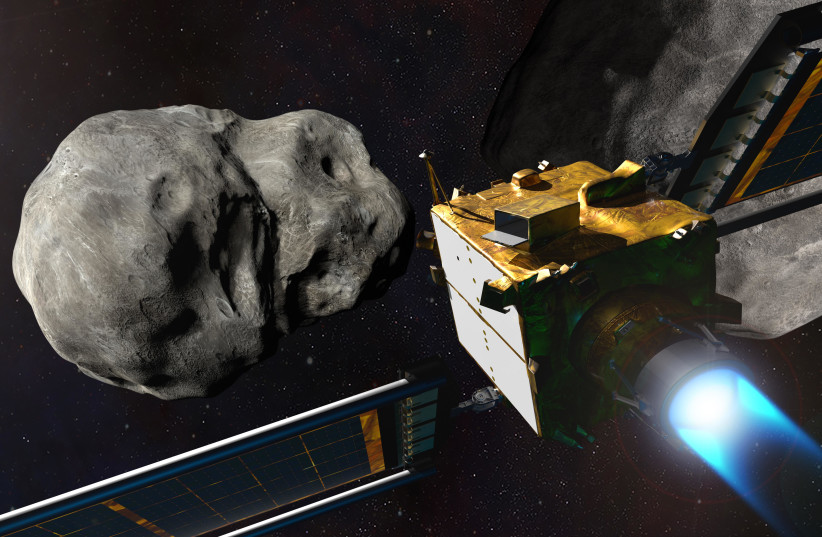A massive asteroid the size of 112 Dromedary camels is set to pass by Earth on Wednesday, the holiday of Shushan Purim, according to NASA's asteroid tracker.
The asteroid in question has been designated 2023 DQ, having been discovered fairly recently this year, according to the Center for Near-Earth Object Studies (CNEOS) at NASA's Jet Propulsion Laboratory (JPL).
Its arrival also coincides with Shushan Purim, which is when Purim is celebrated in a select few cities, such as Jerusalem.
How big is the asteroid coming toward Earth in 2023?
Asteroid 2023 DQ is pretty large, all things considered, with NASA estimating its maximum diameter at 270 meters.
For comparison, the average Dromedary camel, meaning the large single-humped camels, can grow to be around 2.4 meters in height. This means that the diameter of this asteroid is as much as over 112 Dromedary camels stacked atop one another foot to hump.

Naturally, these camels will also be very heavy, but it is undoubtedly clear that this large asteroid is far, far heavier, even if it turns out to be a rubble pile.
When it comes to speed, the comparison isn't even close.
These camels can run at a speed of around 19 kilometers per hour, according to some estimates. This is faster than one might expect of these large desert animals.
However, asteroid 2023 DQ is considerably faster, clocking in at 22.84 kilometers per second, or 82,224 kilometers per hour.
Sorry, camels. You may be seen in some cultures as racing animals, but this is one race you can't win.
Is an asteroid going to hit Earth in 2023?
Asteroid 2023 DQ is very large and its orbit is taking it relatively close to Earth, at least on a cosmic scale.
Because in practice, there's no chance of it hitting the planet.
At most, asteroid 2023 DQ will fly within around 2.3 million kilometers of the Earth. This isn't too far, but it's much farther than the Moon, which orbits the Earth at a distance of around 384,000 kilometers.
And we should be thankful for that too, because if this asteroid did actually hit the Earth, it would certainly be big enough to do some major damage. The Davidson Institute of Science, the educational arm of Israel's Weizmann Institute of Science, has said that an asteroid 140 meters in diameter or more would release an amount of energy at least a thousand times greater than that released by the first atomic bomb.
But while this doesn't seem likely to happen, smaller asteroid impacts have and will continue to occur on Earth.
Here are some examples.
Back in March 2022, a small asteroid around half the size of a giraffe known as 2022 EB5 hit the Earth just hours after its discovery. But given how small it was, it didn't result in any damage.
More recently, in late November 2022, tiny asteroid 2022 WJ1 harmlessly exploded into fragments that scattered around Lake Ontario. NASA had predicted that this small meter-long asteroid would impact this location and knew there wouldn't be any harm from it.
On February 13, 2023, asteroid 2023 CX1, twice the size of a Super Bowl trophy, impacted Earth near Normandy, France. This, too, caused no damage.
And most recently, just a few days after that, a meteor around the size of a Pembroke Welsh Corgi and the total weight of four baby elephants struck the Earth in Texas.

Do we have any way to stop an asteroid from hitting the Earth?
Scientists working in planetary defense are hard at work trying to devise ways of keeping the Earth safe from asteroids. Most notable among these is NASA's Double Asteroid Redirection Test (DART) Mission, which was launched to crash into the faraway asteroid Dimorphous in the Didymous system in order to see if its trajectory would be altered.
To put it simply, they punched an asteroid with a spacecraft to make it move, changing its orbital trajectory. And it worked.
A recent study has also reaffirmed its success, with scientists now certain they could adequately prevent an impact from a dangerous asteroid, provided we have a few years' notice.
And with scientists finding more ways to spot our many rocky neighbors in space – including an initiative to spot asteroids coming from the direction of the Sun, which are harder to spot due to the Sun's glare – this seems like a certainty.
